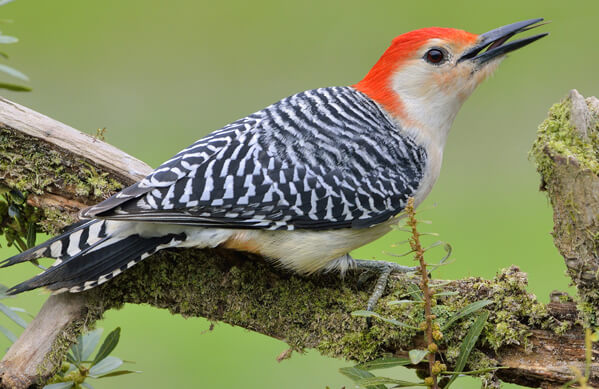Woodpeckers in Florida: Recognition Tips and Habitat Preferences
Woodpeckers in Florida: Recognition Tips and Habitat Preferences
Blog Article
Revealing the Tricks of Woodpeckers: Habits, Environment, and Much More
Woodpeckers, with their unique behaviors and specialized adjustments, have long attracted researchers and nature enthusiasts alike. These amazing birds have a variety of intriguing keys that shed light on their survival strategies, environment choices, and intricate communication approaches. By discovering the enigmas bordering woodpeckers' actions and environment selections, a much deeper understanding of these bird marvels arises, using a glance into their fascinating world. What makes these birds genuinely exceptional, and just how do they navigate their environment with such accuracy and skill? Let's discover the fascinating realm of woodpeckers and decipher the enigmatic details that make them such fascinating topics of study.
Woodpecker Habits Insights
In checking out woodpecker behavior, an interesting display screen of specialized skills and adjustments emerges, clarifying their impressive environmental particular niche - Woodpeckers in Florida. Woodpeckers, understood for their distinct drumming on trees, have a selection of behavioral traits that add to their survival and success in their atmosphere. One essential behavior is their drumming, which serves numerous functions such as interaction, developing region, attracting companions, and locating food sources. This balanced pecking additionally showcases their amazing stamina and endurance, as they can hammer away continuously at broadband without triggering harm to themselves.
Furthermore, woodpeckers exhibit a distinct feeding habits defined by their capability to extract insects from tree bark utilizing their specialized beaks. Their lengthy, barbed tongues aid in catching target, while their strong neck muscles give security and precision during pecking movements. This feeding strategy enables woodpeckers to accessibility surprise insect larvae and extract them with amazing effectiveness.
Habitat Preferences and Selection
What factors influence the environment choices and option of woodpeckers? Woodpeckers are extremely versatile birds known to inhabit numerous environments worldwide. They do display choices for certain habitat characteristics. One vital factor influencing woodpecker habitat option is the accessibility of ideal nesting sites. Woodpeckers usually prefer woodlands with a mix of mature trees that give enough chances for tooth cavity excavation. These cavities work as crucial nesting and roosting sites for woodpeckers and are important for their breeding success.
Furthermore, woodpeckers reveal a preference for environments with a plentiful supply of food sources. They are largely insectivorous, feeding upon beetles, ants, larvae, and other insects discovered in rotting wood or tree bark. useful reference Woodpeckers tend to prefer wooded areas with a varied insect population to fulfill their nutritional requirements.
Additionally, the visibility of dead or decaying trees is an additional crucial link consider woodpecker habitat choice. These trees not just supply food resources but likewise provide appropriate substrate for tooth cavity excavation. Dead trees are vital for the upkeep of healthy and balanced woodpecker populations, as they play an important function in the woodpeckers' life process and ecological community dynamics.
Feeding Routines and Diet Composition
Woodpeckers show a specialized feeding habits concentrated on foraging for bugs within numerous habitats. In enhancement to bugs, woodpeckers additionally eat tree sap, fruits, nuts, and seeds, including selection to their diet plan depending on the period and accessibility of food sources.
The foraging strategies of woodpeckers are well-adapted to their arboreal way of living. Woodpeckers play a vital function in preserving the health of woodlands by managing insect populaces and helping in the decomposition of wood.
Drumming Sounds and Communication
Making use of rapid drumming noises on various surface areas, woodpeckers employ an unique form of communication to signal area limits and attract companions. This drumming actions is not just a way of communication but also works as a means for woodpeckers to establish their presence within a particular area. The strength, rate, and pattern of the drumming can share important details to other link woodpeckers in the area.
Woodpeckers use drumming audios to reveal their visibility in an area and to advise off possible burglars. The loud and repeated nature of the drumming serves as a clear signal to various other woodpeckers that the area is currently declared. This aids in decreasing problems and lessening physical fights in between individuals.

Survival Adaptations and Specialized Anatomy

Verdict
Finally, woodpeckers exhibit one-of-a-kind habits, such as drumming audios for interaction, and have specialized composition for survival in their selected habitats. Their feeding habits and diet structure better show their adaptability to different environments. By understanding these aspects of woodpeckers, researchers and guardians can better secure and protect these interesting birds and their environments.
Report this page